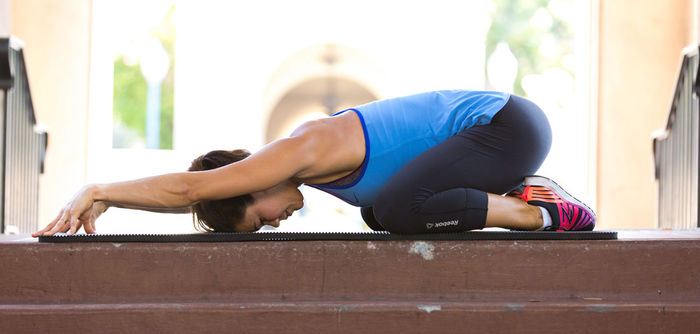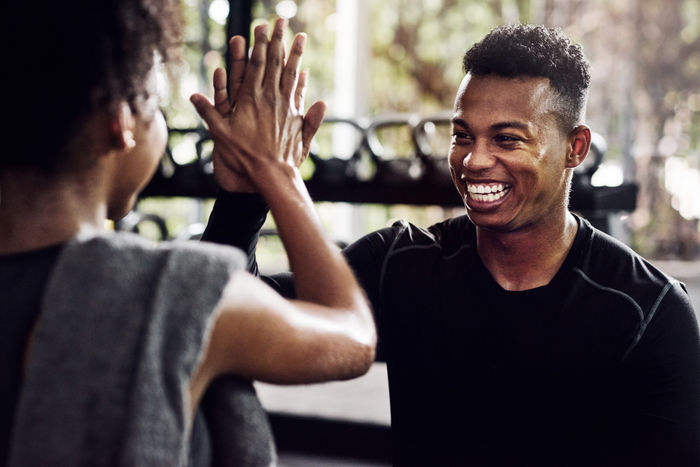Conversations about mental health have become increasingly commonplace in recent years, perhaps spurred on by prominent athletes and celebrities speaking publicly about their personal struggles and then accelerated by the collective trauma of the COVID-19 pandemic, which really brought mental health to the forefront. People began openly discussing topics like isolation, loneliness and depression in a much more honest and open way. The truth is, we shouldn’t need something like a global pandemic to recognize how much we need one another on a daily basis, as mental health and emotional health are vital components of our overall well-being, alongside physical health.
Mental Health Awareness Month, which takes place in May each year, was established in 1949 to increase awareness about the vital role that mental health plays in our overall health and well-being—clearly, this conversation began long before COVID-19!
The Substance Abuse and Mental Health Services Administration (SAMHSA) provides resources and education to support individuals and communities who may need mental health support, so be sure to spend some time exploring that page if your clients have expressed a need or desire to address this element of their well-being. As always, be sure to respect your scope of practice and avoid straying into conversations where you are providing counseling; instead, use coaching principles and offer lifestyle-change strategies.
Just as with physical health, mental health is vital at every age and life stage, and for all people, regardless of how they identify. This is demonstrated by the weekly themes that SAMHSA established for Mental Health Awareness Month 2024, which you can read more about in their Toolkit. Here, the themes are listed along with each week’s key message.
-
Week 1: Older adults—As we age, we may experience life changes that impact our mental health.
-
Week 2: Children and teens—Supportive families, communities and resources can help youth build strong foundations for lifelong well-being.
-
Week 3: Pregnant and Postpartum People—Pregnancy and giving birth can be joyful and can also present a variety of strong emotions for pregnant and postpartum people.
-
Week 4: Racial and Ethnic Minority Groups—Everyone deserves access to respectful and culturally appropriate care.
-
Week 5: LGBTQIA+ Communities—Inclusive families, schools and societies can support mental health in the LGBTQIA+ community.
This year, SAMHSA highlights behavioral health equity, which is defined as “the right of all individuals, regardless of race, age, ethnicity, gender, disability, socioeconomic status, sexual orientation, or geographical location, to access high quality and affordable healthcare services and support.”
This is where you come in...
There are two distinct things to consider here. First, how do the services you provide as a health coach or exercise professional positively impact your client’s mental health?
Consider the following mental health benefits of physical activity:
-
Exercise elevates the production of neurotransmitters, which can stimulate the production of new brain cells.
-
Learning how to do new things can improve cognition and mental acuity. This includes new types of movement or even new exercises.
-
The sense of accomplishment and success after a workout can boost self-esteem, which has a direct effect on your mental health.
-
Exercise can improve sleep, an often-overlooked element of good mental health.
-
Exercise can provide a much-needed break from a person’s busy routine. Many people with anxiety or depression use exercise as a positive coping mechanism.
-
Exercising as part of a group—whether that’s in a group fitness class or in a public park—is an opportunity to connect, make friends and feel like part of a positive and supportive community.
How many of these benefits were you already aware of? And, how much do you promote these benefits to your clients, on your website or in your marketing materials? This may represent an opportunity to attract new clients or retain existing ones who have taken a more holistic view of health during your time working together.
The second consideration centers on the question of who you are reaching with your services. Are you reaching out into communities that are traditionally underserved? Are you meeting people where they are by offering classes, workouts or educational sessions in the community, whether that’s in places of worship, public spaces or anywhere else people are already gathering?
Try to think about the work you do through the lens of behavioral health equity—doing so may reveal new ways to expand your reach and make an even bigger impact on the people and communities you serve.




 by
by 









 by
by